
PUMPA - SMART LEARNING
எங்கள் ஆசிரியர்களுடன் 1-ஆன்-1 ஆலோசனை நேரத்தைப் பெறுங்கள். டாப்பர் ஆவதற்கு நாங்கள் பயிற்சி அளிப்போம்
Book Free DemoBased on the end products and the organism in which it occurs anaerobic respiration is of two types.
- Alcoholic fermentation
- Lactic acid fermentation
What is fermentation?
Fermentation is an anaerobic process in which energy is generated from glucose despite the lack of oxygen. Fermentation takes place in yeast cells, and a sort of fermentation happens in bacteria and mammalian muscle cells.
Alcoholic fermentation:
Alcoholic fermentation (also known as ethanol fermentation) converts carbohydrates to ethyl alcohol and carbon dioxide.
This process is seen in yeasts and bacteria. Humans use alcoholic fermentation in the production of alcoholic beverages such as wine and beer. Sugars are broken down into pyruvate molecules during alcoholic fermentation. These pyruvic acid molecules are then converted to two ethanol molecules and two carbon dioxide molecules.
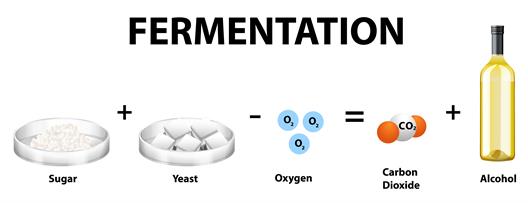
Production of ethyl alcohol
Lactic acid fermentation:
The process of anaerobic respiration is also seen in the cells of our muscles when oxygen is deficient.
This condition comes into action at the time of heavy exercise, prolonged fasting, cycling, walking for many hours where the demand of energy is very high. During this lactic acid is produced from glucose in the muscle cells. In lactic acid fermentation, 6 carbon sugars, such as glucose are converted into energy in the form of ATP.
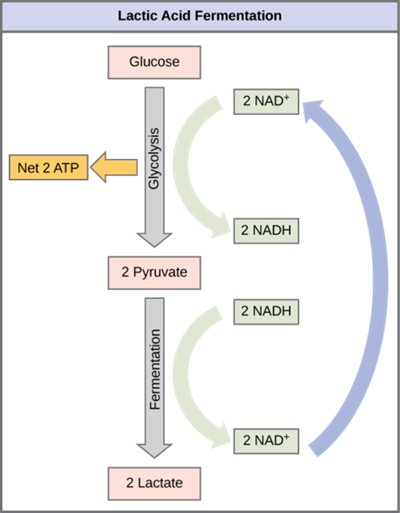
Lactic acid fermentation
Muscle cramps:
- It is a condition that indicates the process of anaerobic respiration. It is due to the production of lactic acid from glucose during anaerobic respiration. To get rid of this condition, a hot water bath or massage is given.
- This is because hot water bath or massage improves the circulation of blood which increases the supply of oxygen, making the muscle cells to respire aerobically, preventing the formation of lactic acid.
The difference between aerobic & anaerobic respiration:
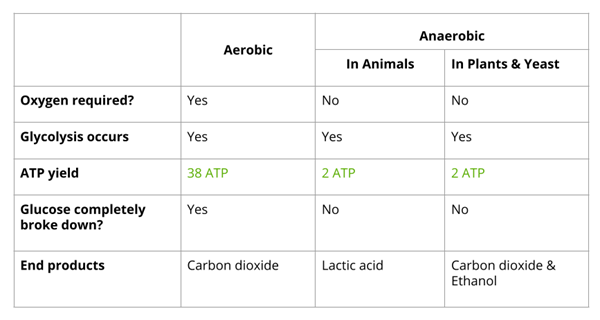
The energy generated during cellular respiration is immediately used to synthesise ATP, which is utilised to fuel all of the cell's other processes. ATP is broken down in these processes, resulting in a fixed quantity of energy used to fuel the cell's endothermic activities.
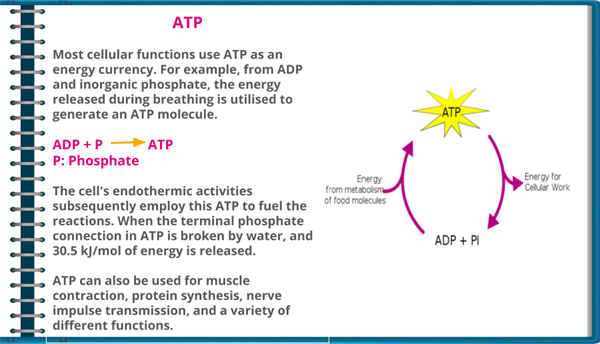
ATP - Adenosine Triphosphate
The aerobic respiration is entirely dependent on oxygen availability, aerobic organisms must ensure enough oxygen intake.
As we know that plants exchange gases through stomata, carbon dioxide and oxygen are exchanged by diffusion here. These gases can either enter cells or escape into the atmosphere.
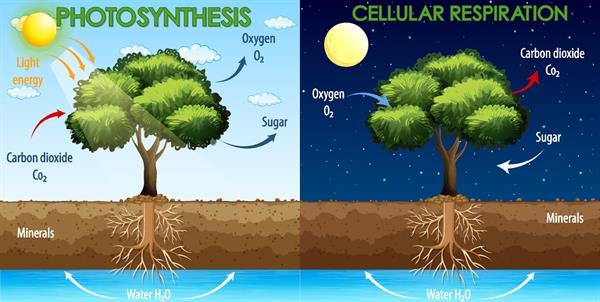
Release of oxygen at day & Intake of oxygen at night
The direction of diffusion is determined by the plant's requirements as well as the surrounding surroundings. Carbon dioxide removal is the principal exchange process during the night when photosynthesis is not taking place. Carbon dioxide produced during respiration is taken up for photosynthesis during the day. Therefore there is no carbon dioxide released. Instead, the key event at this moment is oxygen release.
Reference:
https://www.vecteezy.com/vector-art/1424977-alcoholic-fermentation-chemical-equation
https://commons.wikimedia.org/wiki/File:Figure_07_05_02.png
https://www.vecteezy.com/vector-art/2160359-diagram-showing-process-of-photosynthesis-and-cellular-respiration
https://commons.wikimedia.org/wiki/File:ATP_Cycle.svg